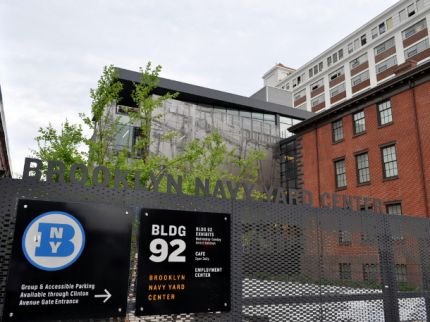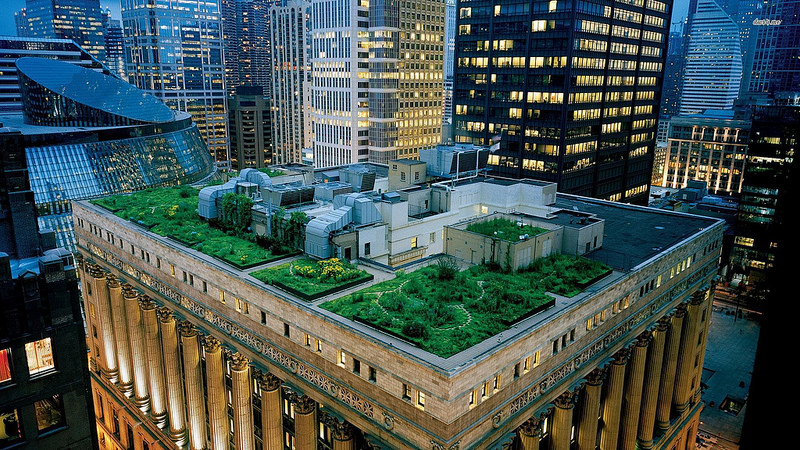
NYC’s workspace landscape is developing constantly: shipyards which were once dedicated to supplying the US fleet with aircraft carriers are now home to 3D printing companies and urban manufacturers; buildings which once housed large-scale manufacturing companies are now being retrofitted as co-working spaces for smaller tech companies. There is a lot going on in the five boroughs and to find out what this means for the city, New York International spoke with a workspace expert. Harsh Mehta is co-founder and COO of OfficeLinks, a company that operates workspaces in New York City and Chicago. He shared his views on current trends in the boroughs and on how workspace in the city might look in the future.
BROOKLYN IS FOR MAKERS, MIDTOWN WEST FOR FASHION BUSINESSES
Finding the right workspace is crucial when building up a business in New York City. Yet, most of the companies facing this challenge don’t know where to go first or which borough might be appropriate for the specific type of work they’re doing. This situation can be overwhelming, especially for international companies coming from overseas.
“There is no structure carved in stone as to where certain types of businesses should or shouldn’t go,” Mehta says, “but there are themes that I see emerging.” As an example he points out Brooklyn where the City has been making a big push toward making the Brooklyn Navy Yard another hub for media companies. Public and private investments of about $1 billion have helped transform the Navy Yard into an industrial area.For tech and media companies, the main destination remains Downtown Manhattan, although there is a big push to get these types of companies to come to Brooklyn as well. The Brooklyn Tech Triangle initiative is working hard to create tech communities within the borough.At the same time, Mehta tells us, Midtown West is growing in popularity for fashion companies. Especially in this part of the city, there will be a lot of changes going on over the next years with the $20 billion Hudson Yards project aimed for completion by 2018. The site will then include more than 17 million square feet of commercial and residential space, which will of course have a huge impact on the workspace landscape.Queens should not be forgotten, however as there is still a lot of talk about the development of Long Island City. “They have had several fairly successful residential developments there and now they are also trying to attract more commercial users. A couple of movie studios have moved there and Shapeways, a European 3D printing company has their US headquarters there. These are good examples to show that Queens can be attractive for businesses.”For companies deciding where to look for space, New York City’s economic development corporation has put together a few resources for finding office space. Mehta recommends that when looking where to start up, “you should think about who you want your employees to be. Identify what kind of individual your ideal employee would be and make sure that your space is accessible to him or her.”
THE FUTURE COEXISTANCE OF RESIDENTIAL AND COMMERCIAL SPACE
To better combine workspace with residential space is another development that Mehta expects to emerge in the near future. There is a push for combining living and working and the notion that they are two different things is diminishing, he says. “I think as we go into the future, the lines will blur between work and life.” This will make changes in the workspace landscape necessary. According to Mehta, future city design should allow citizens to successfully execute various components of their life in the same space in which they live or work. He suggests that future design should aim to make it very easy for a person to get work done – whether it’s in the office, in a park, or in a coffee shop – and at the same time to take care of personal errands such as running out for a yoga class or spending 20 or 30 minutes with their child who is in daycare down the block. “I think, allowing for more residential and commercial space to coexist will go long way.”
NYC’S SMARTER FUTURE
Two more workspace-related developments which Mehta would like to see emerging in the upcoming years are: an extension of the public transportation system and a large-scale use of New York City’s rooftops. “In my opinion, improvements in the public transportation system don’t have to come via large and very expensive infrastructure projects such as new subway lines. Little improvements in the water taxi and public bus system, and extending the CitiBike program would be helpful,” he says. “All these things will, in the future, make parts of the city more accessible than before.” A first step to enable people to plan their trips more efficiently was the extension of the bus-tracking service to Brooklyn and Queens in spring, which allows travelers to time their bus trips via smartphone apps, text messages, and web services.In making strategic investments in public green spaces, the city has already made a great step towards a sustainable future. But still, there is room for growth. “We have a tremendous amount of rooftop space in the city that is largely underutilized,” claims Mehta. With his background of running office spaces both in NYC and Chicago, he draws a comparison between the two cities. “I think Chicago has a pretty good and very successful green roof program towards downtown. I think emulating this and allowing landlords to capitalize on the rooftop space either via installing solar panels or by creating green roof spaces would be a great move in the right direction.”
Little improvements in the water taxi and public bus system, and extending the CitiBike program would be helpful,” he says. “All these things will, in the future, make parts of the city more accessible than before.” A first step to enable people to plan their trips more efficiently was the extension of the bus-tracking service to Brooklyn and Queens in spring, which allows travelers to time their bus trips via smartphone apps, text messages, and web services.In making strategic investments in public green spaces, the city has already made a great step towards a sustainable future. But still, there is room for growth. “We have a tremendous amount of rooftop space in the city that is largely underutilized,” claims Mehta. With his background of running office spaces both in NYC and Chicago, he draws a comparison between the two cities. “I think Chicago has a pretty good and very successful green roof program towards downtown. I think emulating this and allowing landlords to capitalize on the rooftop space either via installing solar panels or by creating green roof spaces would be a great move in the right direction.”
